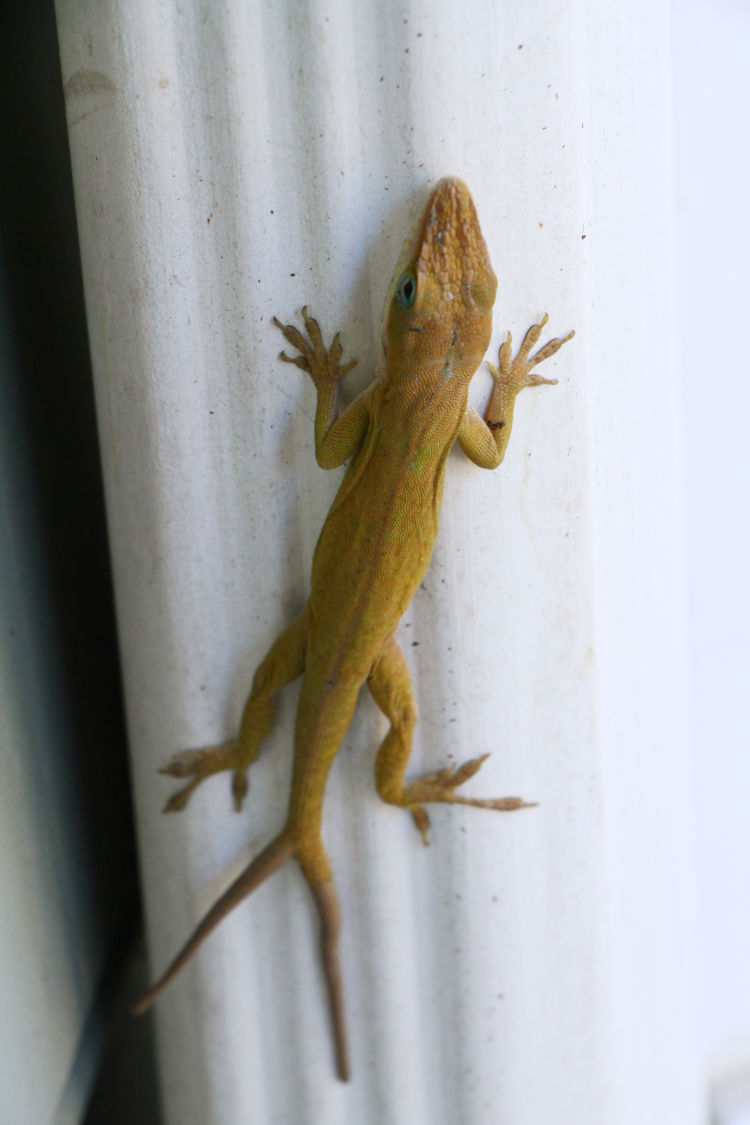I decided to do this one, since it was just a couple days past a year ago that I snagged this shot.

Okay, yes, I’ve featured Carolina anoles (Anolis carolinensis) here a billion times, and there will be more before the end of the week even. But I’ve only featured, and seen, one with a forked tail just once in my life, so this counts. And believe me, I watched carefully, for the remainder of last year and all through this, to see this guy again, in vain. Since this is at the old place, I think my chances of seeing this individual have now passed. Whether the plethora of anoles here at the new place will be enough to permit me to see such a thing again will remain to be discovered.
As I said then, anoles (and skinks at least, but I suspect quite a few lizards) have the ability to regrow their tails if they lose them, and skinks apparently can drop them on demand – which seems like an odd mechanism, so maybe it’s only that the tissue is tenuous to begin with and it can separate if it’s tugged on with sufficient force, usually by a predator. Sounds traumatic, but I’ve seen it happen and the skinks certainly show no signs of adverse effects, and the tail grows back – occasionally, as seen here, it grows back forked, though why this is I cannot say. I also didn’t know how long it took, only having seen it at stages that I was unable to follow or check on periodically, but if this one is that same individual that I saw in the spring of the year, then we have a bit of a timeframe (though I have no idea how long the tail had been regrown, either.)
There’s an interesting avenue of speculation here as well. First off, how important is the tail if it can be removed so easily? I’ve seen numerous examples of skinks and anoles with truncated or regrowing tails, so it happens fairly often – presumably, the lack thereof is not a significant detriment to their survival. While the ability to lose it, distracting predators or escaping their clutches, probably provides a greater advantage than having it for balance or leverage or whatever. Not very many species can regrow limbs, but the tails on both of these species is as long as the body is (well, provided they’re intact,) and with the lizards’ ability to dart forward suddenly, the chances are significant that any predator will snag the tail rather than the torso. The juveniles of the American five-lined skinks have brilliant blue colors on the tail as well, not to mention that it will writhe furiously when detached to attract attention away from the escaping skink. That blue color fades by adulthood however, so by then they’re counting on their camouflage and experience in evasion? Lots to ponder.
Regardless, here’s hoping that I manage to change this experience away from ‘just once.’



















































